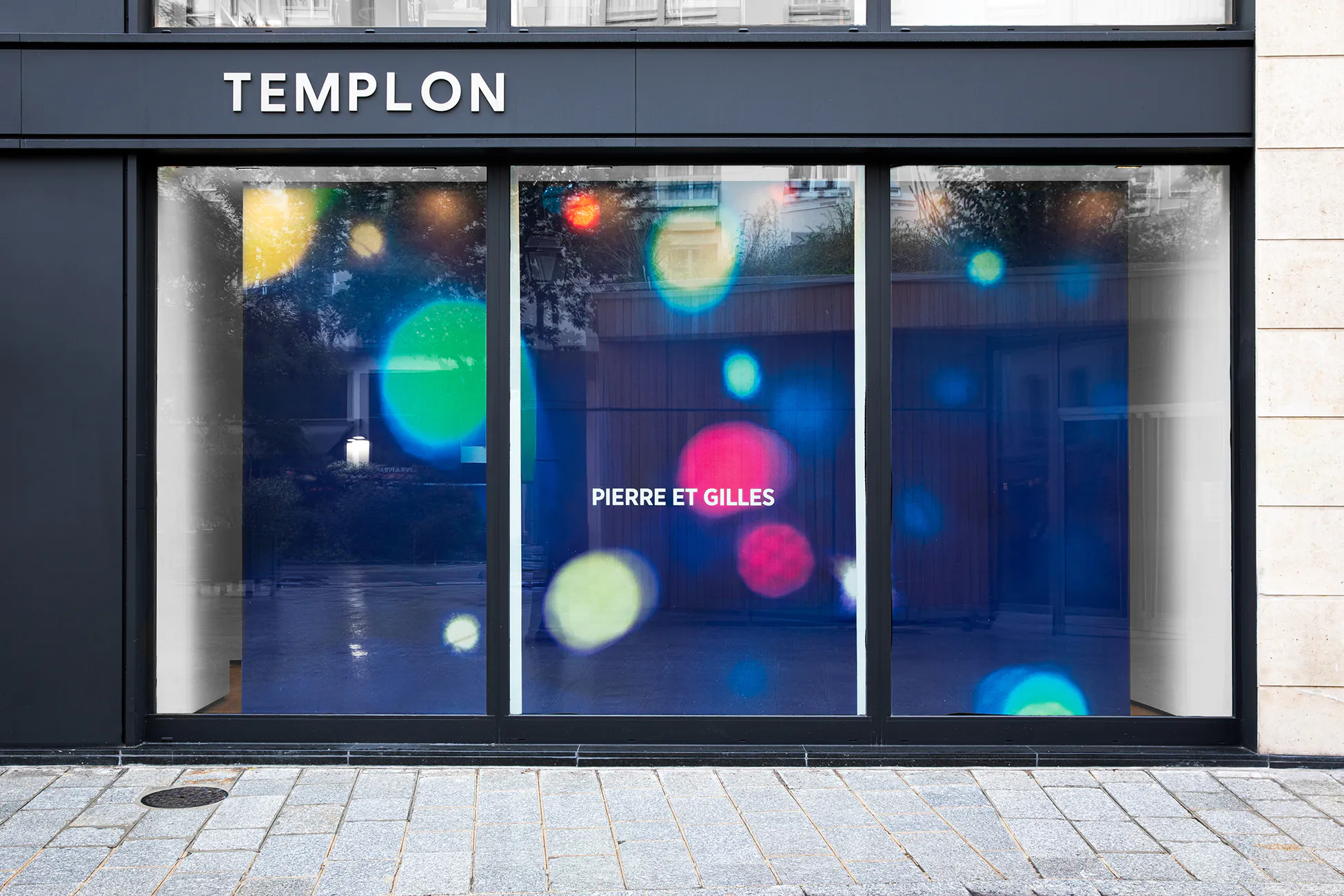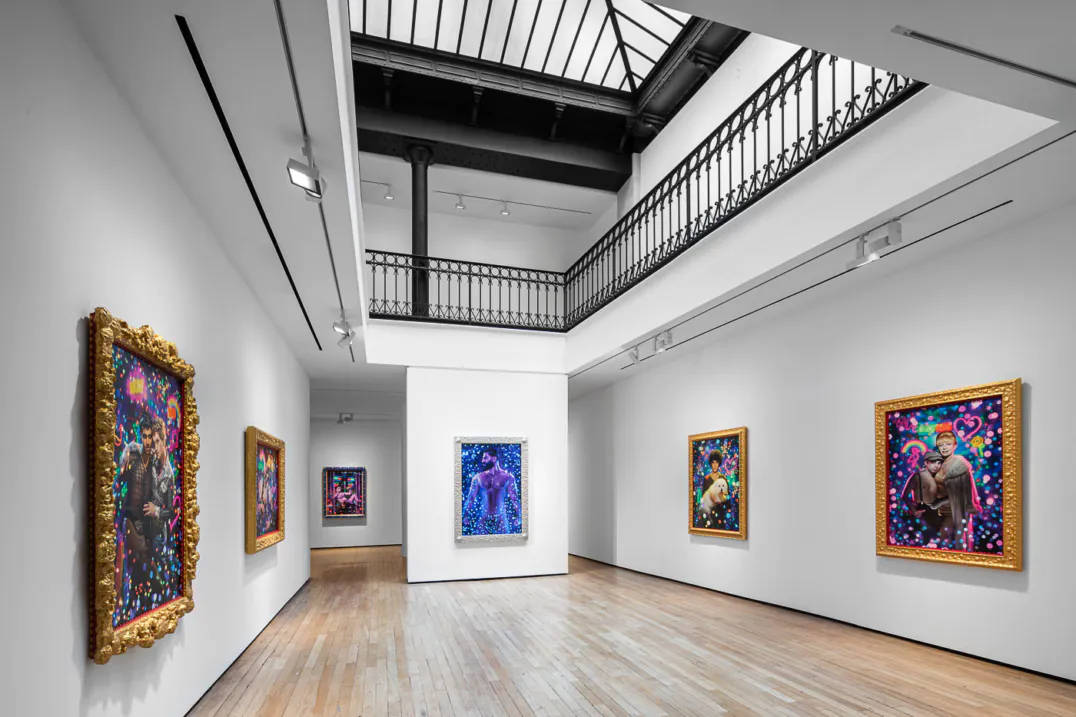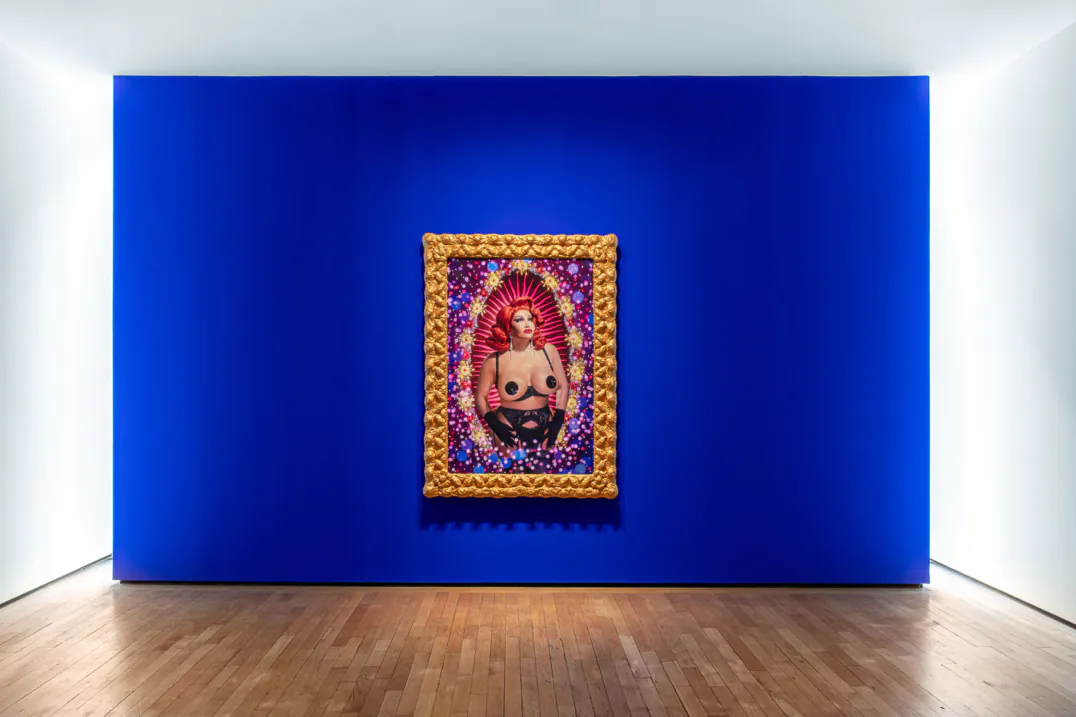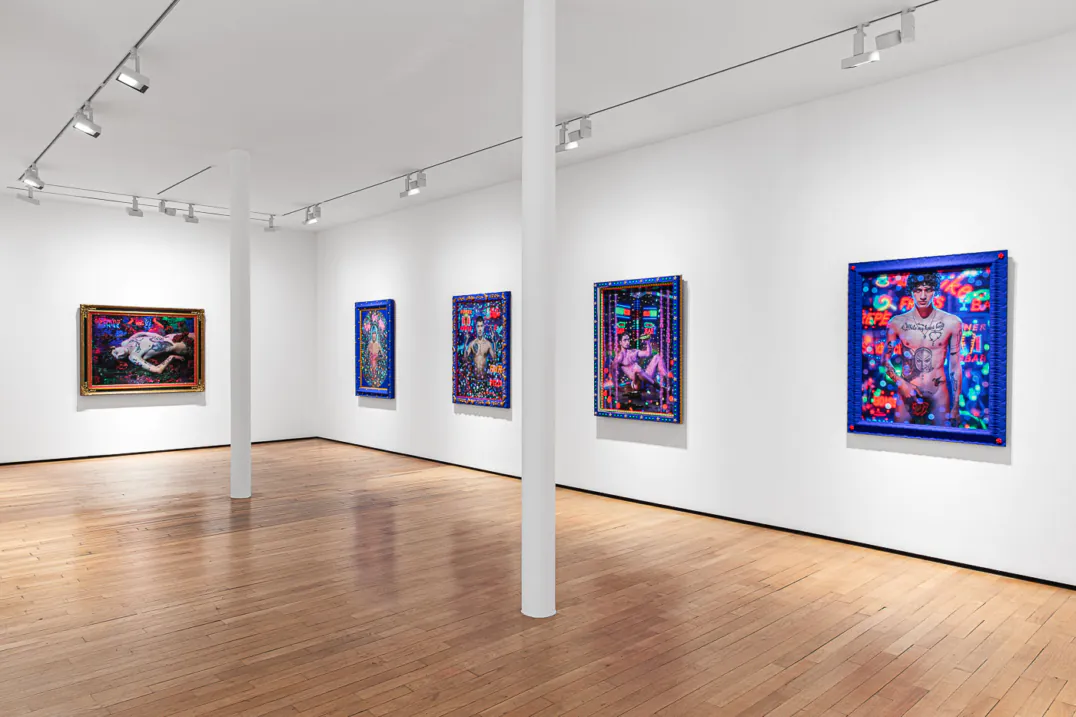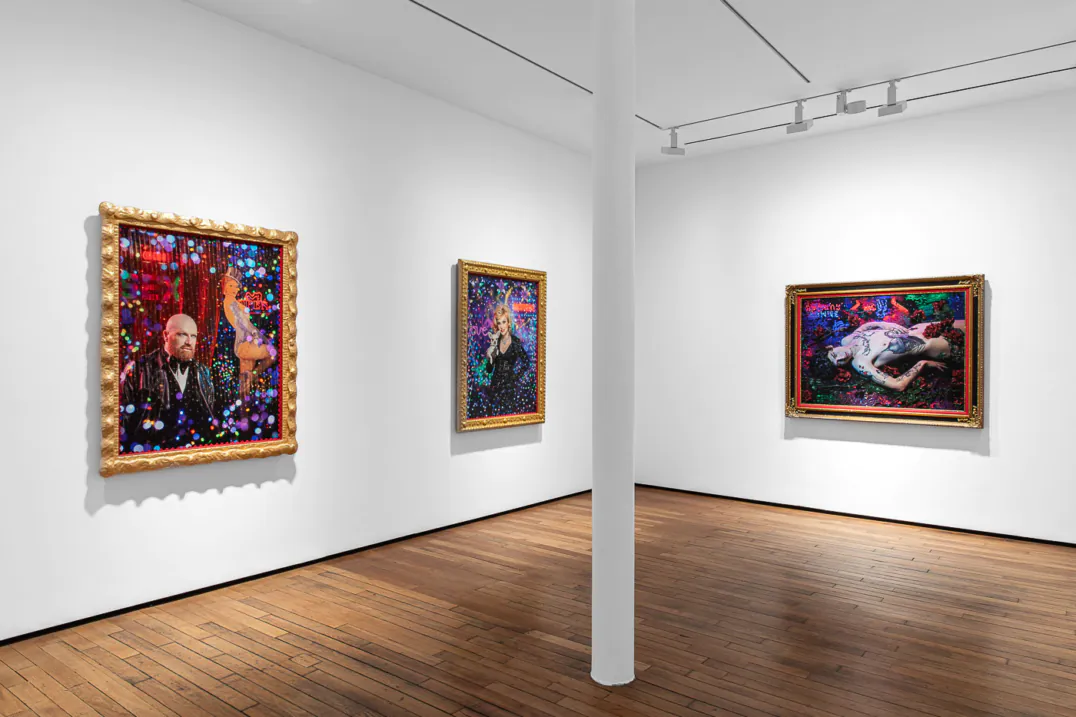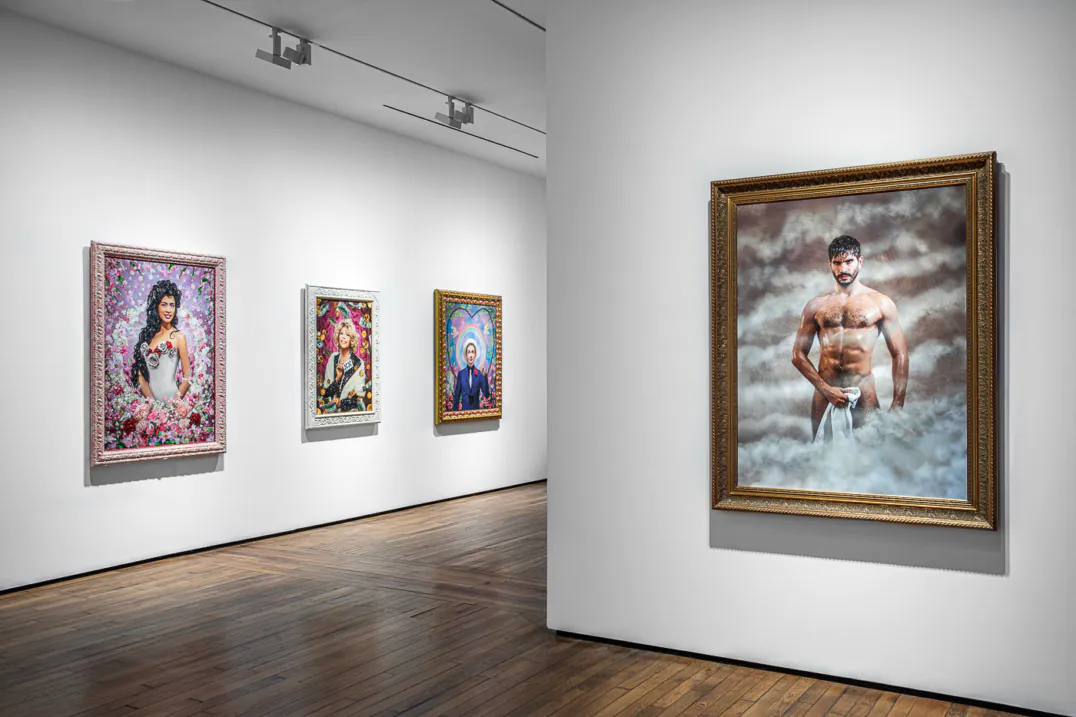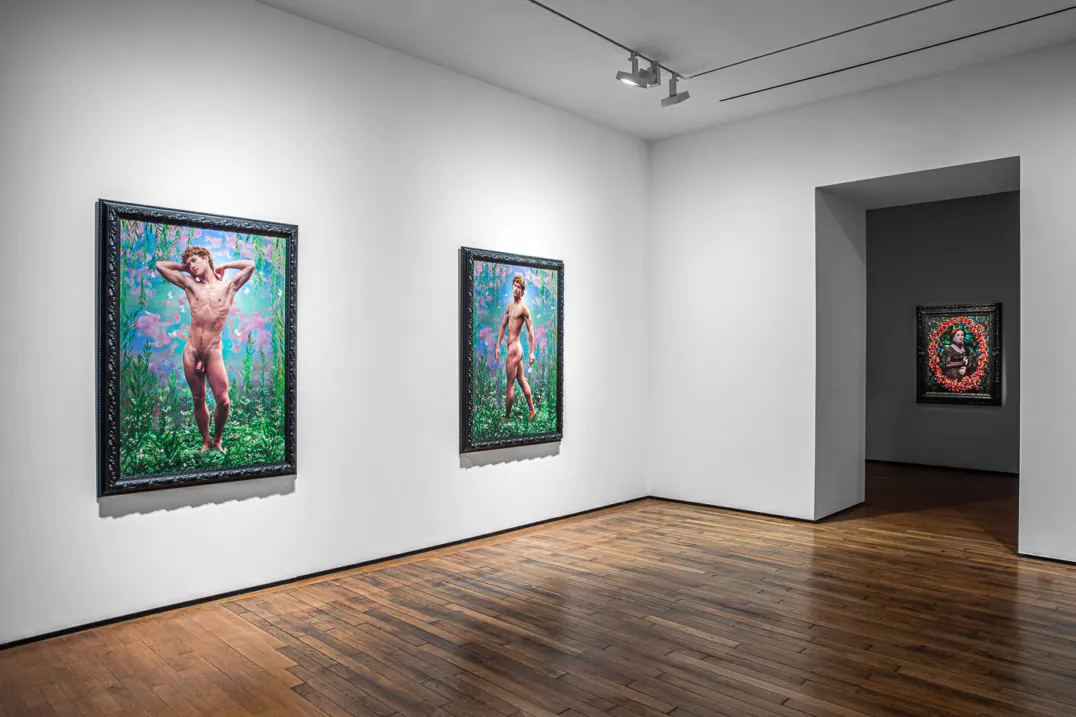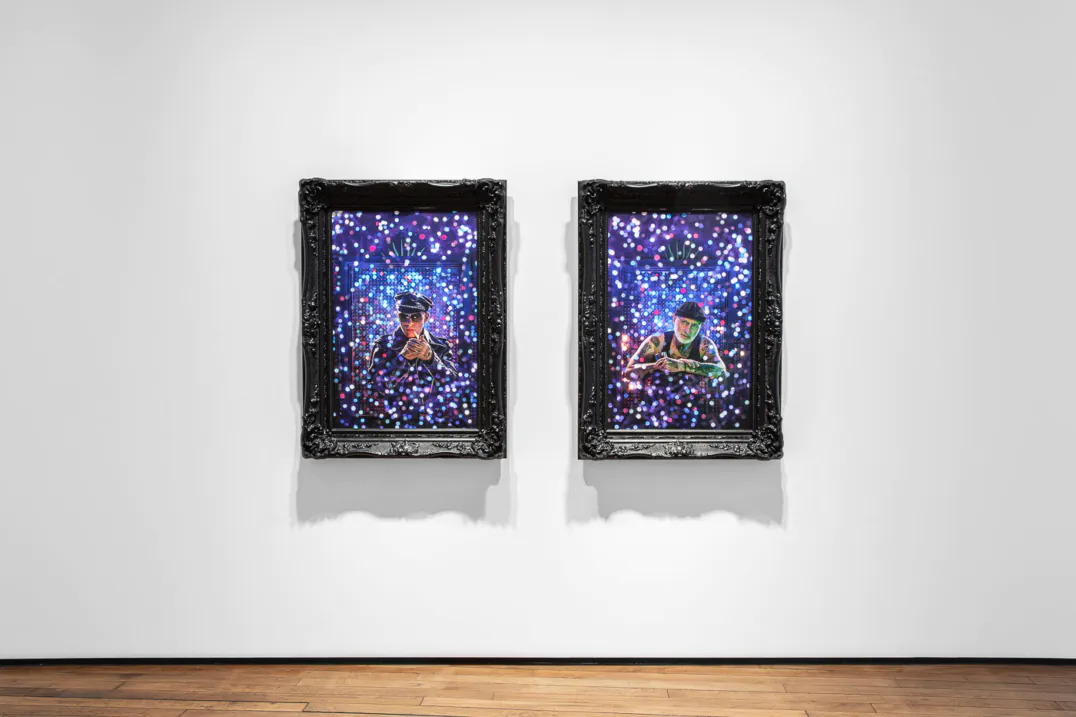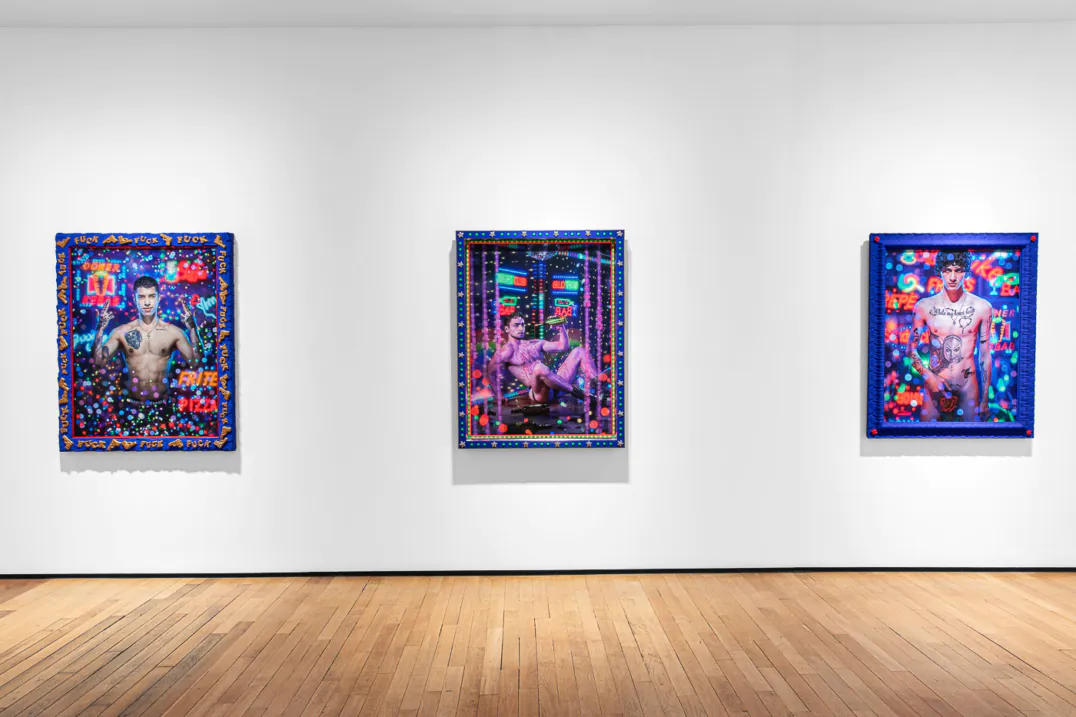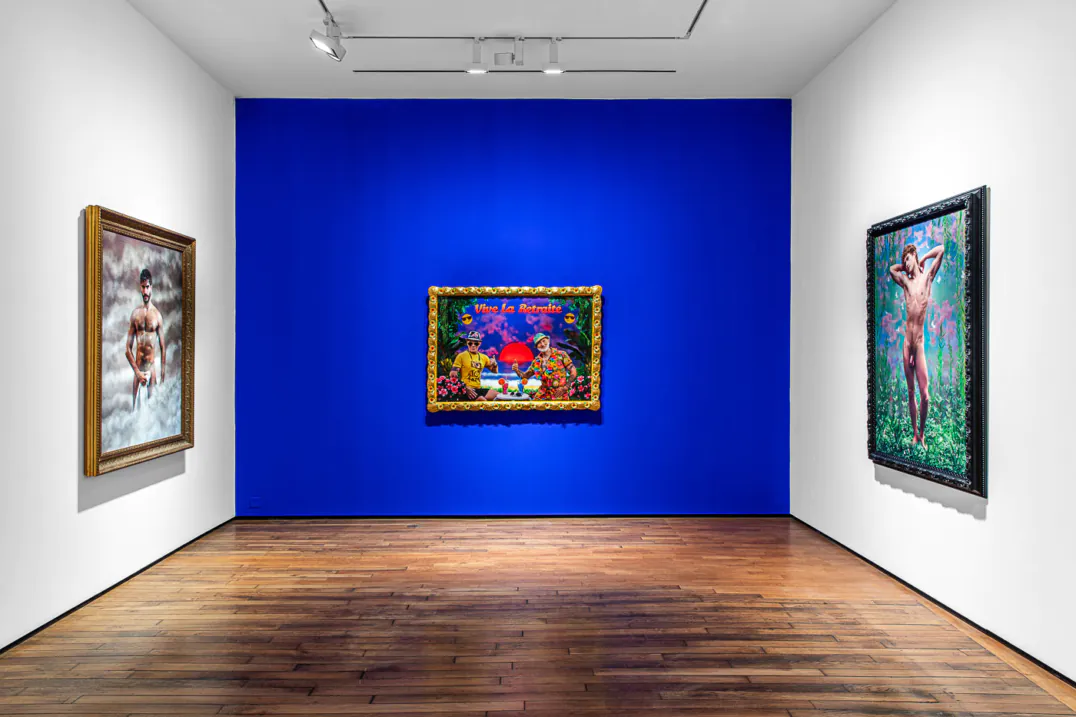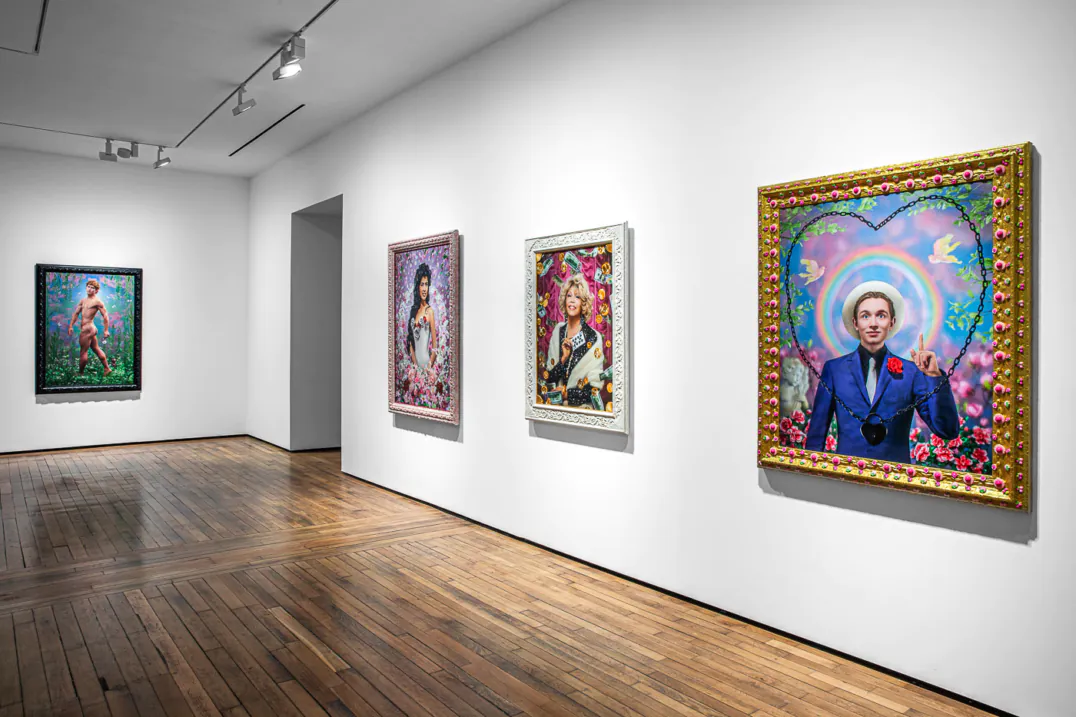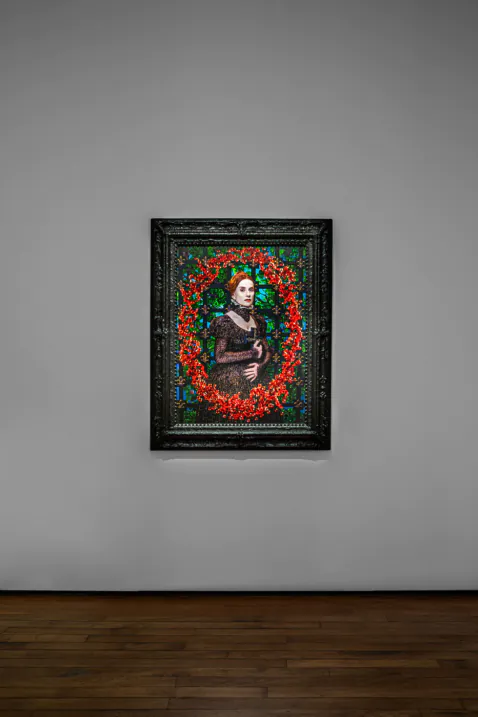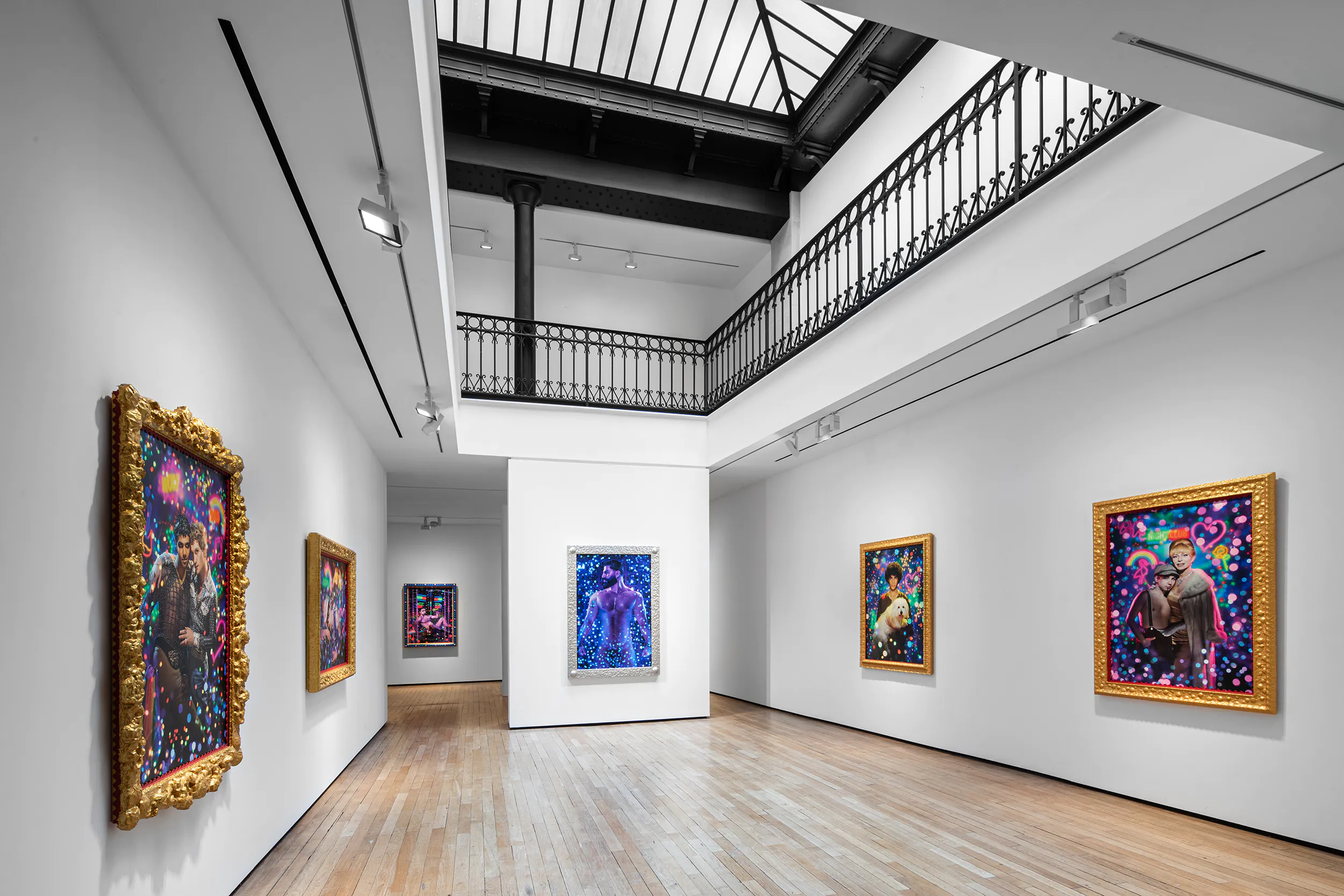
Pierre et Gilles
Nuit électrique
Pierre et Gilles have been producing works together for over forty years, creating dreamlike portraits at the crossroads of painting and photography. Their latest exhibition for Templon Paris, Nuit électrique / Electric Night, underscores the duo’s longevity, the role they play as portraitists of the era and pioneering explorers of LGBTQIA+ questions.
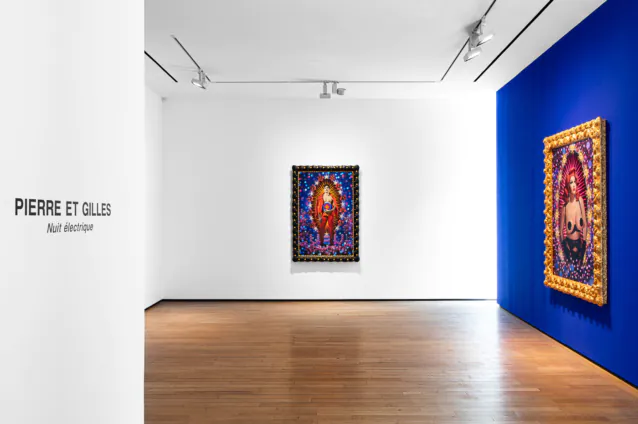
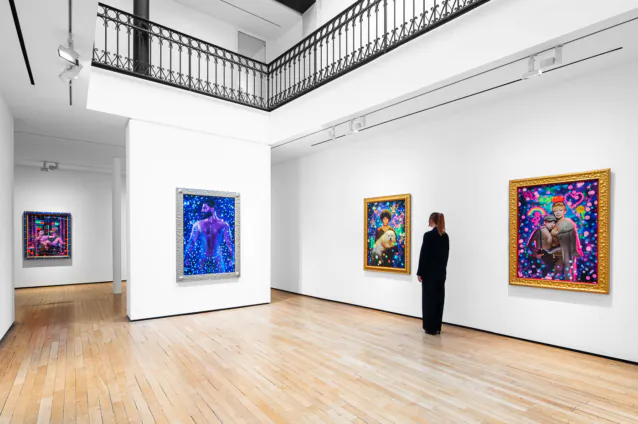
“A large part of our exhibition is called Electric Night. It’s a theme from the night, a world we’ve come to know and love. It’s a bit reminiscent of the Pigalle we knew as teenagers when we first moved to Paris. But it could be anywhere.
It’s great at night because people come out of themselves and so do we.”
Pierre et Gilles
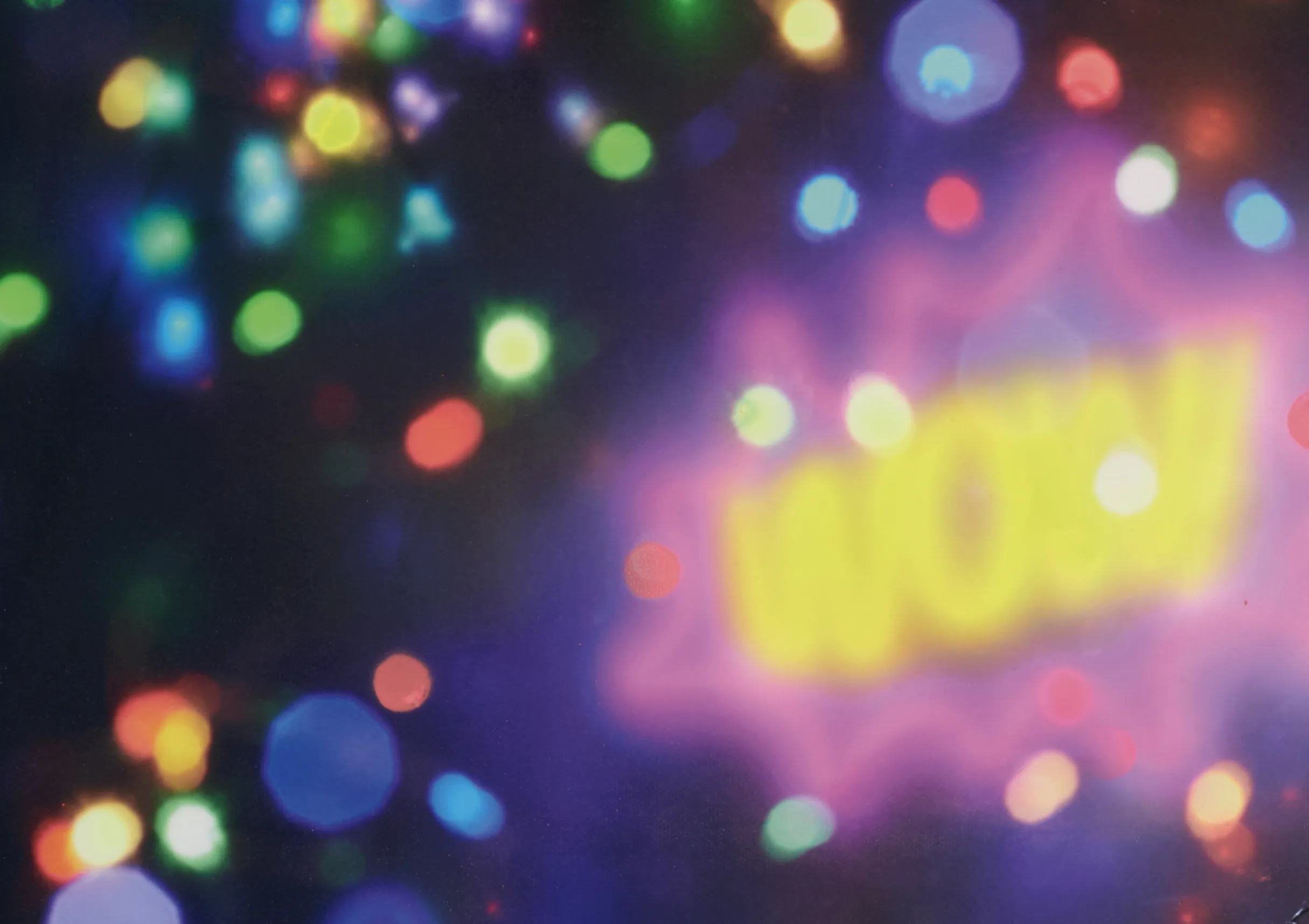
Nevertheless, when we reach the point of thinking we know Pierre et Gilles by heart, they inevitably manage to surprise us. Their new paintings, created over the last two years, show us the artists laughing at their iconic status with a gallery of nocturnal, off-beat portraits.
In 1976 the couple formed by photographer Pierre and painter Gilles began to develop a unique language where references to pop culture and art history rub shoulders, resulting in a marvellous, subversive, unusual and engaged body of work. Their new, previously unseen series is haunted by a synthetic neon glow, infused with the light of the underworld and artificial paradises. Euphoric nostalgia for the heyday of the Palace, the mythical Paris nightclub they are so frequently linked to, or disenchantment with a world where all the battles have possibly been won? Pierre et Gilles populate the works with some of their favourite characters: sailor, angel, rascal and urchin. Characters who are placed in undefined, shady spaces which could be a nightclub, fairground or cabaret. Their models, some naked, some tattooed, couples in love and disheartened singles, form a seductive, joyful and vaguely unsettling throng. In the midst of this gay, trans, cross-cultural youth, Pierre et Gilles put two self-portraits into the mix. One, imbued with solemn melancholy, shows them as separate. The other depicts them as lively retirees in an old-fashioned picture-postcard setting. Playing on the ambiguities of different registers, Pierre et Gilles lay claim to their camp universe with a good dose of humour. They are also implicitly portraying a shadowy world, a depiction oscillating between optimism and disillusion.
As a counterpoint, Pierre et Gilles unveil two portraits of their long-standing muses: Amanda Lear as a boulevard theatre actress, and Isabelle Huppert as a majestic Mary Stuart. The portraits provide a contrast that spotlights the originality of the new way Pierre et Gilles are working with light. The use of harsh artificial lighting that never dims but transfigures characters is one of the most radical aspects of their recent practice. It can be read as a powerful metaphor for resistance to the passing of time that levels everything, existences as well as combats. What degree of benevolence has the LGBTQIA+ community succeeded in garnering after over half a century of societal progress? What place and consideration is there today for people on the margins of society?
Pierre et Gilles are internationally renowned artists whose work has been the focus of numerous major museum exhibitions, including a retrospective at the Maison Européenne de la Photographie in 1996 and shows at New York’s New Museum in 2000, the Museum of Contemporary Art in Shanghai in 2005, and Jeu de Paume in Paris in 2007. In 2017, a comprehensive retrospective entitled Clair-Obscur was held at the Brussels Musée d’Ixelles before moving to MuMa in Le Havre. In 2018, they exhibited at the K Museum of Contemporary Art in Seoul. In 2019, two major exhibitions, La Fabrique des idoles at the Cité de la Musique – Philharmonie de Paris and Le goût du cinéma at the La Malmaison art centre in Cannes, met with spectacular public and critical success. In 2022, their work was the subject of the Troubled Waters exhibition at the Spritmuseum in Stockholm. In 2023, the Over the Rainbow exhibition of Paris’ Centre Pompidou dedicated an entire section to their work and their archives. Their art features in numerous collections including at the Getty Museum in Los Angeles, Musée National d’Art Moderne at the Centre Pompidou, Paris, Musée d’Art Contemporain de Montréal, Museum of Fine Arts, Houston, and the Pinault Collection and Maison Européenne de la Photographie, both in Paris.
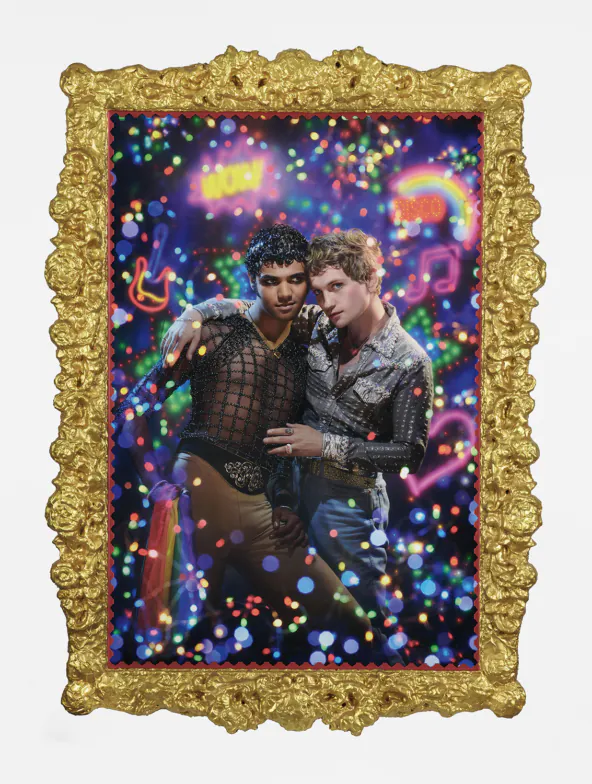
Over the Rainbow (Nassim Guizani et Lukas Ionesco)
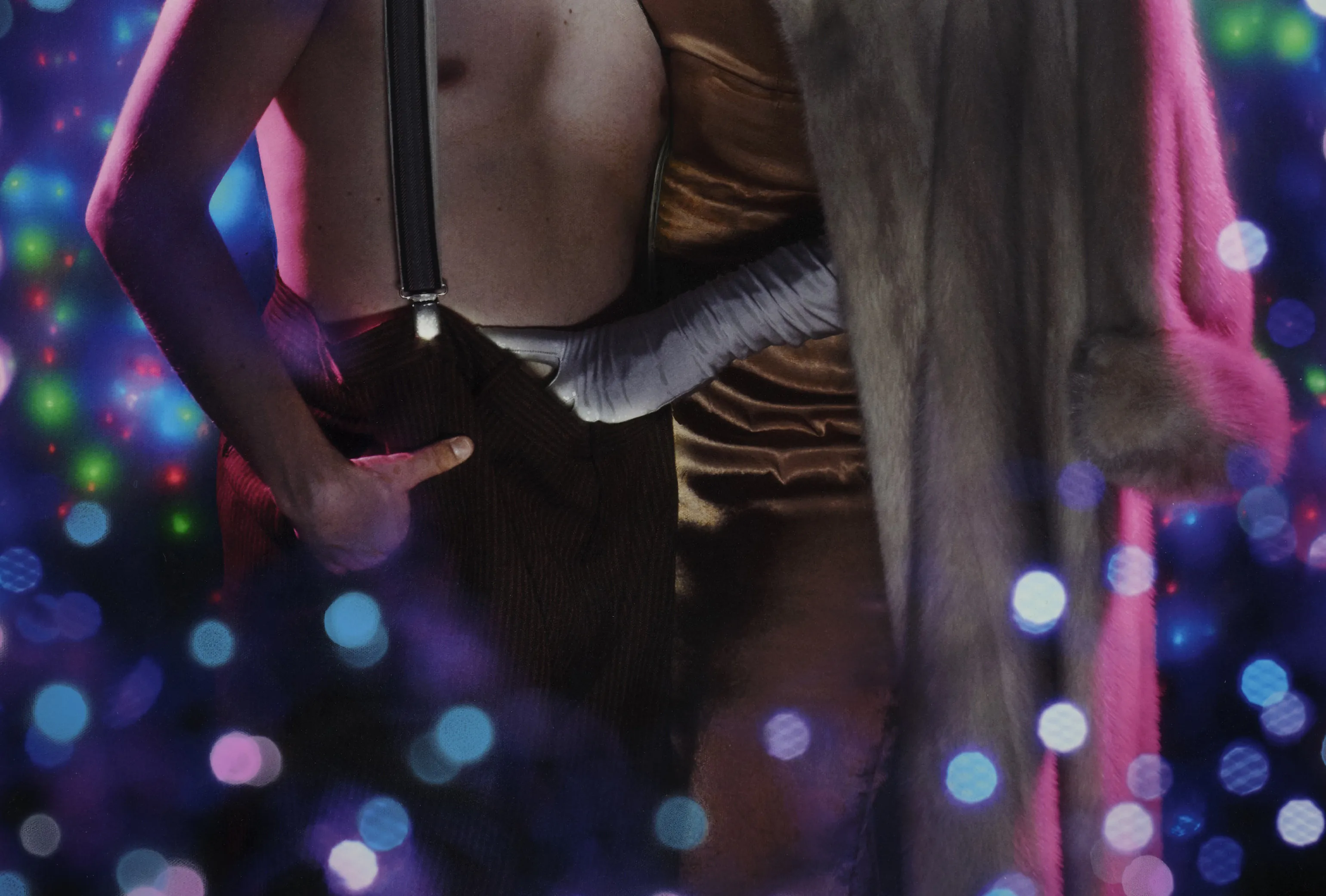
The artist
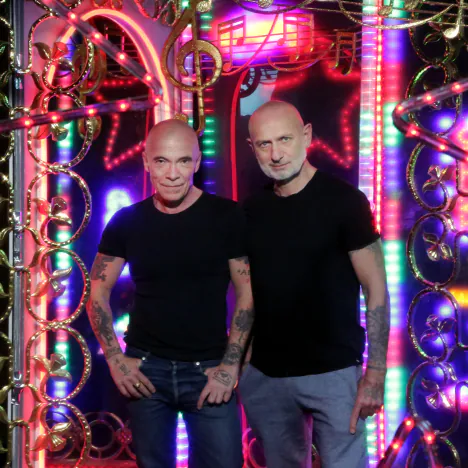
Pierre was born in 1950 in La Roche-Sur-Yon, Gilles in Le Havre in 1953. They are internationally renowned artists who have been producing works together since 1976, creating a world where painting and photography meet. Their art is peopled by their friends and family, anonymous and famous, who appear in sophisticated life-size sets the artists build in their studio. They meticulously apply paint to the photographs once printed on canvas. Accomplished image creators, Pierre and Gilles have built up an extraordinary contemporary iconography on the frontier between art history and popular culture.
